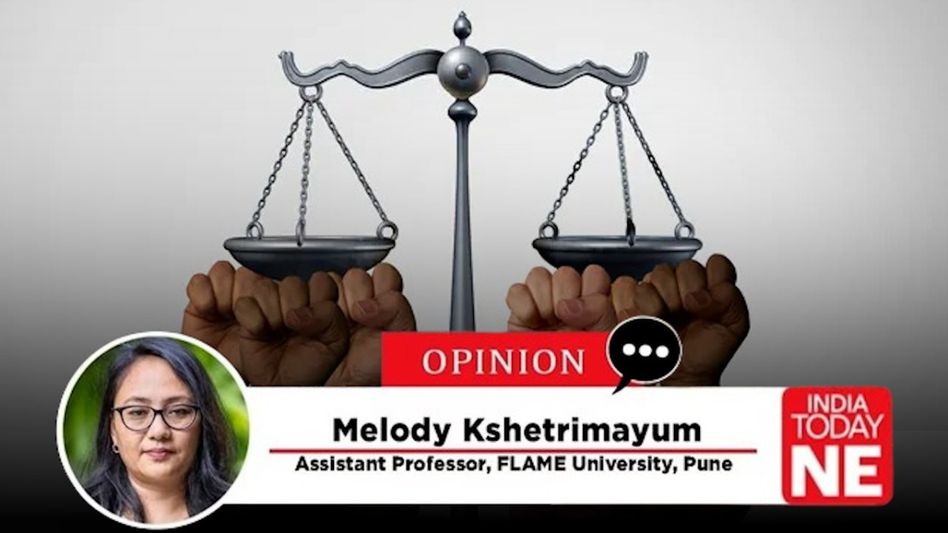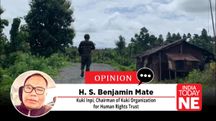World Day of Social Justice 2024 with Gender Inequality, Social Exclusion and Armed Conflict
Social justice, in simple terms, is equitable access to social, economic, political privileges and opportunities in a peaceful co-existing environment. The term was coined by Luigi Taparelli d’ Azeglio in 1843 who put forward a vision of justice that legitimates aristocratic rule by grounding it in supposedly natural inequalities between individuals.

Social justice, in simple terms, is equitable access to social, economic, political privileges and opportunities in a peaceful co-existing environment. The term was coined by Luigi Taparelli d’ Azeglio in 1843 who put forward a vision of justice that legitimates aristocratic rule by grounding it in supposedly natural inequalities between individuals. Responding to regional and global issues, the vision and approaches to social justice expanded gradually beyond rights and economic equality. Contemporary definitions of social justice are contextual and include various themes such as promotion of a just society, equitable treatment and equitable allocation of resources, accepting diversity, rights-based initiatives, challenging injustices, and peaceful co-existence. The world observes the world day of social justice on 20 February every year to promote a just society, peace and security, respect for human rights, and fundamental freedoms and address financial crises, insecurity, poverty, exclusion and inequality within and among societies.
For whom are we making efforts to achieve social justice in 2024?India’s multitude of persistent problems remain unresolved over the years. Wide inequalities exist between the centres and the peripheries, the majority and the minority at the macro level and between people with different power, opportunities, and identities. Establishing on 2023’s scenario, three key issues need immediate attention on the world day of social justice.
Gender Inequality: Cultural norms of gender continue to affect women both in urban and rural areas. The inequalities between men and women in India could be seen in various socio-economic dimensions such as education, employment (workforce participation), health and mental health, political participation as reported in NFHS, ILO, Global Gender Gap report, etc.The Gender Gap report 2023 shows that India stood at 127th out of 146 countries. The covid phase has added yet another dimension to the existing inequalities, namely the digital gender gap. It has created a wide disparity with women having less access to technology and internet than men.
Women’s participation in the workforce was consistently low in India and have even declined during the covid phase with 19% in 2021. The images of migrant workers returning to their villages due to lockdown cannot be forgotten. Many women did not rejoin their workplaces after covid. Many livelihood restoration programmes were introduced and civil societies helped women in income generation activities. According to the Periodic Labour Force Survey 2022- 23, the female labour force participation rate increased to 37% in 2023.The increased rate is appreciative but gender equality looks far from successful. Socially constructed domestic responsibilities and unequal division of labour put women in a position that do not allow them to have autonomy in getting access to or utilising available resources and opportunities. Gender inequality intersects with caste, class, health, and policy that may influence their decision-making processes. Equality will be closely achieved if these dimensions are also taken care of, in the policy making and implementation. India’s gender budget increased from 2.23 lakh in 2023 to 3 lakh crores in 2024, and approximately 48 % will go to employment and education of women. Hopefully, the all-time highest investment in education and employment will change the notions of discriminatory gender norms. The deep-rooted discriminatory gender norms and beliefs need to be changed at the local level through education.
Social Exclusion: If one maps social exclusion in India, one would see multilayered complexities and politics between the majorities and the minorities. The social location of one group intersects withits various ascribed and achieved statuses and makes it more vulnerable. To name a few marginalised sections, Dalits, Adivasis, women, religious minorities, people living with disabilities, and people from the North Eastern region of India face discriminations due to their social locations. Besides having low socio-economic indicators, these groups find it difficult to lead their lives with autonomy and dignity. Dalits are subjected to verbal and physical abuse, discrimination in employment, sexual violence, child labour and less wages. Adivasis live in poverty, have limited access to healthcare, and face displacements due to development projects. Women and minorities bear the brunt of power relationships. People from the North Eastern region face racial slurs and physical abuse in educational settings and streets in various parts of India.
The ‘othering’ of these groups and identities creates more inequalities and conflicts. This othering is reflected in the larger context of education, employment, health and political participation. While govt programmes, reservation policies, and scholarships are made available to uplift the socio-economic status of these marginalised sections, they still find challenges in getting societal recognition and acceptance. The dominant groups need to acknowledge the differences of various groups and accept their distinctiveness.
Armed Ethnic Conflict: The ten-month-old ethnic conflict between the Meities and Kukisin Manipur since May 2023 has teared apart the social and economic fabric of Manipur. It has killed more than 200 people and displaced around 70 thousand people. The number of deaths could not be estimated as fresh clashes still continue even today.The two lifelines- National Highway 2 and 37 face economic blockages frequently that imports goods and essentials to the state. This affects the livelihood, trade, and access to essential goods. Currently, the displaced people are living in relief camps with no signs of going back to their homes. Livelihoods of people who are not directly affected by the armed conflict, have been uprooted. The youths of the state are unemployed and threatened by the violence. The state is witnessing extortions, frauds and mistrust among the public. The societal values of reciprocity, trust and support among communities have been disintegrated. The govt has allowed the conflict to continue for ten months that resulted in fierce conflict between armed militias of both sides. The violence is endangering lives of civiliansfor ten months and is posing a threat to the national security. Why the government is not paying attention to this grave concern? This is an emergency that the government must look to ensure that injustice do not continue in the state. People of Manipur deserves peace and security as any other citizens in the country.
India needs to pay immediate attention to these three unresolved issues in 2024 to promote a just society. Inclusion of people at the peripheries and distributing attention, resources and opportunities equally among all social groups of the country are imperative towards creating a just society.
Copyright©2025 Living Media India Limited. For reprint rights: Syndications Today









